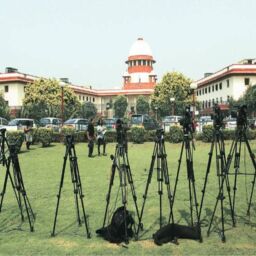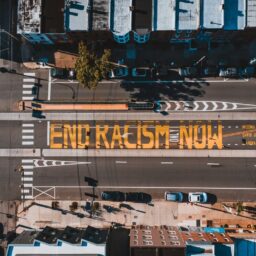A Brief History
Founder of Dogra Dynasty, a Hindu dynasty, Maharaja Gulab Singh (crowned as Raja of Jammu in 1824) demanded to take over Kashmir. He signed the Treaty of Amritsar, 1846 in which he paid 75 lacs Nanakshahi Rupees to the British Government so that he would become the Maharaja of Jammu & Kashmir. Under this convention, the British Government transferred all the hilly or mountainous country with its dependencies positioned to the eastward of the River Indus and the westward of the River Ravi subsuming Chamba except Lahore as adverted in Article 1. In 1925, Maharaja Hari Singh ascended the throne and came into reign. In 1947, during partition, the British Government had its paramountcy policy in which princely states were presented three options i.e. 1) To join the Union of India, 2) To join the dominion of Pakistan, or 3) To remain independent. But Maharaja Hari Singh wanted to stay with neither India nor Pakistan as he claimed Kashmir as a whole new country. In October 1947, Pashtun tribes of northwest Frontier Province attacked to annex Jammu & Kashmir with the support of Pakistan. Then Maharaja Hari Singh approached SardarVallabhai Patel for assistance as he was the then Home Minister of India. But SardarVallabhai Patel refused to help unless Hari Singh signed the ‘Instrument of Accession’.
Consequently, on 26th October 1947, Maharaja Hari Singh signed it and Jammu & Kashmir was considered as the official integral part of India. Then the Indian Army removed the army of Pakistan but Pakistan was not satisfied with the agreement formed between Hari Singh and the Indian Government. In between these negotiations, Pakistan already captured 1/3rd part of Kashmir which is now known as Pakistan Occupied Kashmir (POK), and the other part is known as India Occupied Kashmir or Azad Kashmir. Because of which Jawaharlal Nehru approached the UN. UN Charter, 1947 declared the part of Kashmir as a disputed area and gave a solution of Plebiscite. A plebiscite is a referendum during which the people of Jammu & Kashmir were given a chance through voting in which they had to decide whether they wanted to be a part of Pakistan or India. Before the plebiscite, they were given a condition to remove their armies from the respective area but they refused to do so and the plebiscite never happened.
Article 370
Article 370 was introduced in Jammu & Kashmir to incorporate the Instrument of Accession and to give autonomy to the state. It is a part of Part XXI of the Constitution which provides temporary, transitional, and special provisions to 12 states of India. Article 370 gave special status to Jammu & Kashmir such as:-
- Parliamentary laws will not be applicable to Jammu & Kashmir except the matters related to Defense, Communication, and External Affairs which cover a total of 31 areas of Central and Concurrent List.
- Only Articles 1 and 370 of the Indian Constitution are applicable to Jammu & Kashmir. For other articles, the President needs to issue an order to consult and to take the permission of the State.
- It was a temporary provision. It is mentioned in Article 370 (3) that it can only be dissolved by the Constituent Assembly of Jammu & Kashmir but the Constituent Assembly of Jammu & Kashmir was already dissolved in 1957.
- The Central Government cannot invoke a financial emergency in Jammu & Kashmir.
Article 35A
Dr Rajendra Prasad adjoined Article 35A within the Constitution through Presidential order[1]. Article 35A defines the right of State subjects of Jammu & Kashmir. Under this article,
- All the citizens of other states could not buy properties in Jammu & Kashmir.
- Special rights and privileges are given to permanent residents of Jammu & Kashmir.
It defines ‘permanent resident’ as –
Any person who was a state subject on or before 14th May 1954, is the occupant of the state for the last 10 years, and lawfully acquired immovable property within the state.[2]
Armed Forces (Special Powers) Act, 1958
In 1990, India made the Armed Forces (Special Powers) Act, 1958 which is applicable to Jammu & Kashmir also known as AFSPA. Under this act, the Indian Army is given some special powers to maintain law and order in the disturbed areas. According to the DisturbedAreas (Special Courts) Act, 1976 formerly declared’ disturbed’, the area has to maintain the status quo for a minimum of 6 months.[3]But this Act received a lot of criticism with regards to the human violation.
Recent Developments and Jammu & Kashmir (Reorganization) Act,2019
Recently, the Constitution (Application to Jammu & Kashmir) Order, 2019 was passed surpassing the Constitution (Application to Jammu and Kashmir) Order, 1954and scrapping Article 35A. Also, ‘Constituent Assembly’ in Article 370 was substituted by ‘Legislative Assembly’. Now, the provisions of the Indian Constitution will be applicable to the state of Jammu & Kashmir.
The government moreover adjoined clause 4 in Article 374 of the Indian Constitution which makes the following changes:-
- Reference to this Constitution or to the provisions thereof shall be interpreted as references to the Constitution or the provisions thereof as applied in relations to Jammu and Kashmir.[4]
- References to the Governor of Jammu and Kashmir shall be interpreted as including references to the Governor of Jammu and Kashmir acting on the guidance of his Council of Ministers.[5]
Jammu And Kashmir (Reorganisation) Act, 2019
Under this act, the statehood of Jammu & Kashmir is taken away and it is divided into two union territories i.e. Jammu & Kashmir and Ladakh. This is also known as delimitation i.e. positioning the boundaries or limits of territorial constituencies in the State. This Act repeals 153 state laws and extends 106 central laws to Union Territories. This Act abolished the Jammu & Kashmir Legislative Council. Now, Jammu & Kashmir has a Legislative Assembly while Ladakh is controlled directly by the Union Government. In addition to that, 24 seats have been reserved for Pakistan Occupied Kashmir in the new Legislative Assembly. This Act also took away the state’s special status and now, anybody can take the property and avail employment opportunities over there. The enactment of this Act resulted in security lockdown and communication blackout which is the longest internet ban in the history of democracy. This internet ban is challenged under AnuradhaBhasin v. UOI[6](Right to the Internet)in which she challenged how the right to the internet is infringed by the government in Jammu & Kashmir. Later on, 2 services were installed in the state.
Conclusion
All this faced a lot of criticism as an Act was passed without any proper discussion in the Parliament and no prior perspectives of concerned people were initiated. Centre abrupted in the matter without any preceding considerations that affected the lives and sentiments of people. People of the State had faced a lot of problems because of shutting down communication services for quite a long period. It overripe people’s lives, jobs, and economy. Although it has some criticism yet there is a fact to be agreed upon that Jammu & Kashmir is now considered to be an integral part of India when it comes to enforcing the law in that State as one common law will be followed in the whole of the country and no State ‘consultation’ is required.
Author(s) Name: Aastha Bhageria (Guru Gobind Singh Indraprastha University, Delhi)
References:
[1]Krishnadas Rajagopal, ‘What is Article 35A?’ The Hindu (India, Aug 26, 2017) < https://www.thehindu.com/news/national/what-is-article-35a/article19567213.ece >
[2] The JammuAnd Kashmir Grant Of Permanent Resident Certificate (Procedure) Act, 1963
[3]Disturbed Areas (Special Courts) Act, 1976
[4]‘Indian Constitution to apply in Jammu and Kashmir: President order’ The Economic Times (India, Aug 05, 2019) < https://economictimes.indiatimes.com/news/politics-and-nation/indian-constitution-to-apply-in-jammu-and-kashmir-president-order/articleshow/70533102.cms?from=mdr >
[5]‘Indian Constitution to apply in Jammu and Kashmir: President order’ The Economic Times (India, Aug 05, 2019) < https://economictimes.indiatimes.com/news/politics-and-nation/indian-constitution-to-apply-in-jammu-and-kashmir-president-order/articleshow/70533102.cms?from=mdr >
[6] AIR 2019 SC 1725
















